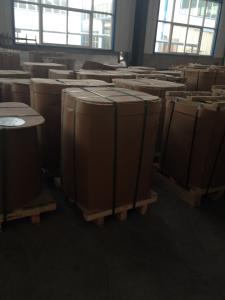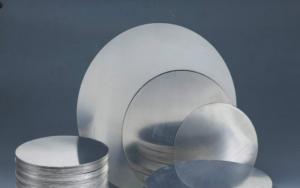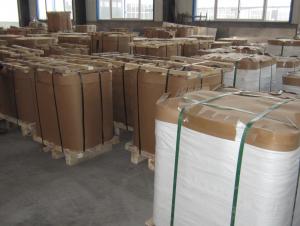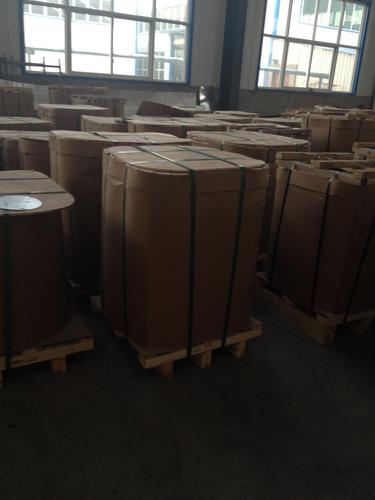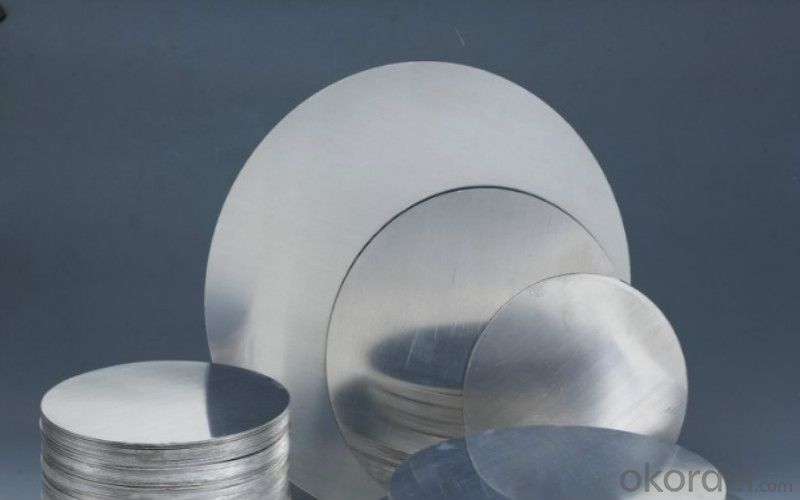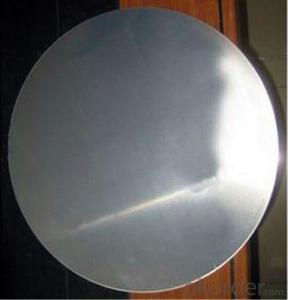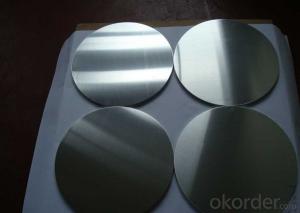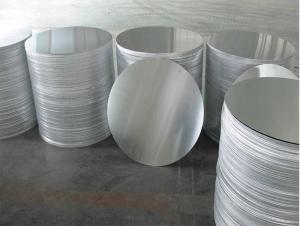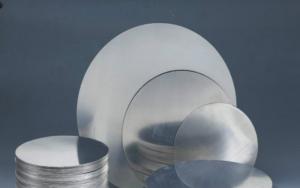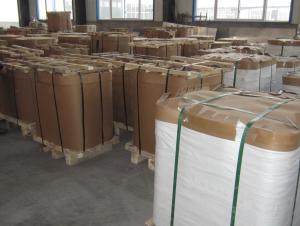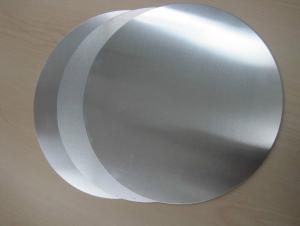Aluminum 3xxx Series C.C Quality Aluminum Circles
- Loading Port:
- China Main Port
- Payment Terms:
- TT or LC
- Min Order Qty:
- 4 m.t.
- Supply Capability:
- 10000 m.t./month
OKorder Service Pledge
OKorder Financial Service
You Might Also Like
1. Structure of Aluminum Cirlces C.C Quality 3xxx Description
Aluminum circles C.C quality 3xxx is made from aluminum coils 3xxx. Aluminum circles C.C quality 3xxx has great ductility, heat conductivity, anti-corrosion and moisture resistance properties.
Aluminum circles C.C quality 3xxx are widely used for kitchen wares including fried pans, non-sticky pans, cooking pots,hard anodized cookware, pressure cooker and house hold utensils.
2. Main Features of Aluminum Cirlces C.C Quality 3xxx
• Superior quality of raw material
• Reasonable and stable chemical composition
• Accurate tolerance
• Goode mechanical property
3. Aluminum Cirlces C.C Quality 3xxx Images
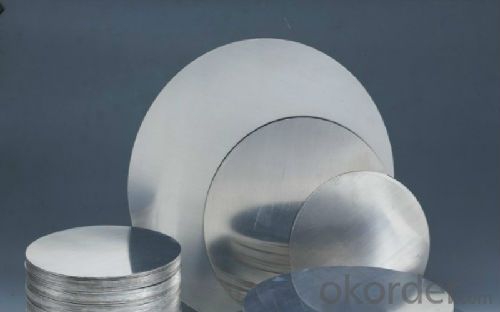
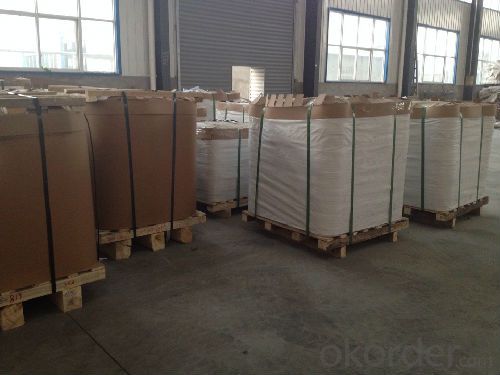
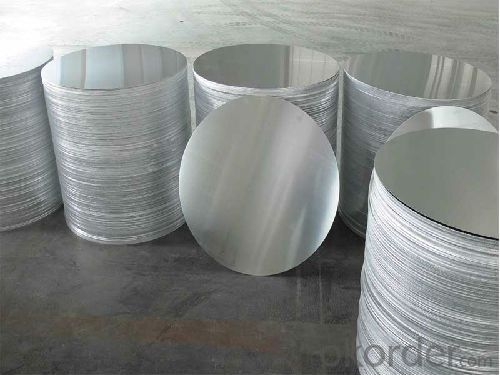
4. Aluminum Circles C.C Quality 3xxx Specification
| Alloy | AA3xxx (AA3003 etc.) |
| Temper | O, H14 |
| Thickness | 0.5mm --4mm |
| Diagonal | 100mm--1200mm |
| Standard | GB/T 3880-2006 |
5. FAQ of Aluminum Circles C.C Quality 3xxx
A. What is the MOQ?
The MOQ of aluminum cirlces C.C quality 3xxx is 5 tons for each size.
B.How to guarantee the quality?
Customers are welcome to our mill to visit and check the products. Besides, we can arrange a third party to test the aluminum sheets 1xxx C.C quality products.
- Q: This question asks about the various uses of aluminum in the electronics industry.
- <p>Aluminum is widely used in electronics for several applications due to its excellent electrical conductivity, lightweight, and corrosion resistance. It's commonly used in the manufacturing of electrical wires and cables, as it efficiently conducts electricity. Aluminum is also utilized in heat sinks and heat dissipation systems to manage heat generated by electronic components. Furthermore, it's employed in the construction of electronic casings and enclosures for its strength and lightweight properties. Additionally, aluminum is used in electrolytic capacitors and as a reflective coating in some types of electronic displays. Its versatility makes it indispensable in various electronic devices, from computers to smartphones and other consumer electronics.</p>
- Q: This question asks about the chemical reaction between aluminum and water.
- <p>Aluminum does not react with water under normal conditions. However, when aluminum is heated, it can react with steam to form aluminum oxide and hydrogen gas. The reaction is exothermic and can be represented by the following equation: 2Al + 3H2O 鈫?Al2O3 + 3H2. This reaction is utilized in some industrial processes, but it is not a common occurrence in everyday settings. At room temperature, aluminum is protected by a thin layer of aluminum oxide that forms on its surface, which prevents further reaction with water.</p>
- Q: Explain how the use of aluminum impacts energy consumption, including its production and recycling processes.
- <p>The use of aluminum has a significant impact on energy consumption, particularly in its production process. Aluminum is an energy-intensive material to produce, requiring large amounts of electricity to extract from its ore, bauxite, through a process called electrolysis. This process accounts for about 5% of global electricity consumption. However, aluminum is also highly recyclable, and recycling aluminum uses only 5% of the energy needed to produce it from raw materials. This makes aluminum recycling a more energy-efficient process, reducing the overall energy consumption related to aluminum use when recycling is prevalent.</p>
- Q: Does aluminum have the ability to corrode or deteriorate over time?
- <p>Yes, aluminum can corrode, but it typically forms a protective oxide layer on its surface when exposed to air, which prevents further corrosion. This layer of aluminum oxide is very thin but strong and stable, making aluminum highly resistant to corrosion. However, under certain conditions such as exposure to certain chemicals or in the absence of oxygen, aluminum can still corrode. Corrosion can also occur if the protective layer is damaged or compromised.</p>
- Q: Is it safe to use aluminum containers for food and drink in a microwave?
- <p>Aluminum is not recommended for use in microwave-safe containers for food and drink. While some aluminum containers are designed to be microwave-safe, they are typically coated with a non-metallic material to prevent arcing and damage to the microwave. However, most aluminum containers are not safe for microwave use as they can cause sparks and potentially damage the microwave. It's best to use microwave-safe plastics, glass, or ceramics specifically designed for microwave use.</p>
- Q: This question asks for an overview of the environmental concerns associated with the manufacturing process of aluminum.
- <p>The production of aluminum is associated with several environmental issues. One major concern is the high energy consumption required for the smelting process, which contributes to greenhouse gas emissions. The process also generates significant amounts of waste, including red mud, a hazardous byproduct that can contaminate soil and water if not properly managed. Additionally, deforestation and habitat destruction occur due to the mining of bauxite, the primary ore of aluminum. Air pollution is another issue, as the production process releases particulates and other pollutants into the atmosphere. Lastly, the depletion of non-renewable resources, such as fossil fuels used in the smelting process, is a long-term environmental concern related to aluminum production.</p>
- Q: This question asks about the potential health advantages of using food packaging materials that do not contain aluminum.
- <p>Yes, using aluminum-free food packaging materials can have several health benefits. Aluminum has been linked to potential health risks such as Alzheimer's disease, although the evidence is not conclusive. By eliminating aluminum, there is a reduced risk of exposure to this potentially harmful element. Additionally, aluminum-free packaging can be beneficial for individuals with allergies to aluminum. It also supports environmental sustainability as some aluminum-free alternatives are biodegradable, reducing the environmental impact of packaging waste. Overall, choosing aluminum-free packaging can contribute to a safer and healthier lifestyle.</p>
- Q: What benefits does aluminum offer compared to other metals?
- <p>Aluminum has several advantages over other metals, including its low density, which makes it lightweight and ideal for transportation applications. It also has excellent corrosion resistance due to the formation of a protective oxide layer. Aluminum is highly malleable and ductile, allowing it to be easily shaped and formed into various products. It is also a good conductor of heat and electricity, making it useful in electrical wiring and heat exchangers. Additionally, aluminum is abundant and relatively inexpensive compared to other metals, and it is recyclable, contributing to its sustainability.</p>
- Q: This question asks for examples of how aluminum is used in architectural designs.
- <p>Aluminum is a versatile material in architecture due to its strength, light weight, and resistance to corrosion. Some examples include the Empire State Building's spire, which was originally clad in aluminum, and the Petronas Twin Towers in Kuala Lumpur, known for their aluminum and glass facade. The Guggenheim Museum in Bilbao features an aluminum-clad exterior, and the Beijing National Stadium, also known as the Bird's Nest, utilizes aluminum for its intricate lattice structure. Additionally, aluminum is commonly used in curtain walls, window frames, and roofing systems due to its durability and sustainability.</p>
- Q: Is there a more environmentally friendly method for recycling aluminum?
- <p>Yes, aluminum can be recycled in a more environmentally friendly way. The process of recycling aluminum is already quite efficient, as it requires only 5% of the energy needed to produce new aluminum from raw materials. However, further improvements can be made by optimizing recycling processes, reducing transportation emissions, and increasing the use of recycled aluminum in new products. Additionally, implementing closed-loop recycling systems where aluminum is continuously recycled without loss in quality can minimize waste and environmental impact. Educating consumers about the importance of recycling and improving collection systems can also contribute to more sustainable aluminum recycling practices.</p>
Send your message to us
Aluminum 3xxx Series C.C Quality Aluminum Circles
- Loading Port:
- China Main Port
- Payment Terms:
- TT or LC
- Min Order Qty:
- 4 m.t.
- Supply Capability:
- 10000 m.t./month
OKorder Service Pledge
OKorder Financial Service
Similar products
Hot products
Hot Searches
